To properly equip the sewage in a private house, there are baggage of certain theoretical knowledge. But it is impossible to say that without special training you will not be able to design the sewage for your home. Design principles are available for all people who have received secondary education.
Although the design will be able to fulfill even a schoolboy, the practical side of the case requires the executor of construction skills. For example, the ability to use the level, strobhole walls, putty. There is a lot of physical strength, especially if during the preparation of trenches it turns out that the earth on your site is clay or stony. Also perhaps you can not do without the experience of those who have already done a similar job.
Why do you need a sewage project?
Ideally, if the water supply and sewage project is laid in the project of everything at home before it started to build. But there are such cases: the house was built in those times when all the amenities traditionally constructed in the yard. And you had the honor to deliver these amenities into the house. This option is more complicated, but quite fulfuting. Purchase components from plastic for the sewage device is not difficult: they are in every construction store. But before these components to connect and lay, it is necessary to make a plan or sewage project.
The project is necessary for two reasons:
- The first reason. Sewerage is an engineering system. Because of its device, it is necessary to adhere to the norms and requirements for the operation of buildings. The diagram of your site with a sewage drawing will help clearly calculate the necessary tolerances, distances and slopes.
- The second reason. Starting sewage laying without prior design, you risk getting confused, spend over time, strength and money. In addition, when working without a project, errors are inevitable, and as a result - samples of sewage, unpleasant smell on the plot.
The general sequence diagram of a private house (project) includes:
- the outer part is the channels and pipes outside the house for which the drains are discharged into the cesspool;
- the inner part is the pipe inside the house, collecting drains from plumbing devices.
General design principles We tried to set out in this article. But for each specific case, the sewage device may differ somewhat from general recommendations. Therefore, it is advisable to get acquainted with the ready-made example of a sewage project, especially if it has been successfully implemented and operates.
Internal sewage device
Designing the inside of the sewerage begins with the definition of the location of the following devices:
- plumbing devices: toilet, shower, sink, washing, bath;
- home appliances: washing and dishwashers.
A sewer tube should be supplied to each of the devices. Naturally, the devices are connected to the pipe not directly, but through special siphons.
Important! In the project of the internal sewering, the toilet should not be the most remote from the basement of the plumbing device! Since it is its wastewater that have the greatest density, it is desirable to have devices with a liquid drain further from the riser than the toilet. Otherwise, blockages are inevitable and the need for frequent revisions and cleaning.
Pipes and fittings for internal sewage are traditionally produced from gray plastic. A waste pipe with a diameter of 110 mm is usually connected to the toiletz, and at least 50 mm to the rest of the device.
If possible, horizontal pipes must be laid straight, without turns. The gasket of horizontal pipes is carried out with a bias of 2-3%. The bias of the pipes is measured as a percentage. At the same time, 1% of the slope means the difference in the height of the pipe in 1 m at a distance of 100 m. The pipe system is crashed into a common riser. The pipeline joins the riser using only oblique tees and crosses! To avoid blockages, direct tees in the horizontal position are not recommended.
In no case do not launch a device for completely hidden pipes into the sealing project, without revisions. After all, in the case of a block, you will have to destroy the walls and the floor! According to the standards of the pipe is laid in special stages, channels or boxes. In boxes are provided for openings 40 * 40 cm to access audits. The revision needs to be located on the lower and upper floors.
We leave out
In order to correctly implement the connection of the inner and external sewage, the riser must first be bulk under the foundation into a special basement. If the sewer pipe is laid without a riser, and the estates are collected in a horizontal pipe, then it cannot be lowered down at once on 90⁰. It is necessary to perform 2 transitions to 45⁰, otherwise the occurrence of pipes should be inevitable. Sharp turns can also cause strong noise during the output of the stock outward.
Important! The basement for the release of sewage should be separated by capital walls from the basement for storing products or residential premises.
Thus, the riser falls under the foundation and connects to the withdrawal tube. The withdrawing tube connects the external and internal sewage. The withdrawal of the pipe through the wall of the house is carried out through a predetermined steel clutch (its diameter is made by 2-3 cm for laying the sealer). The diameter of the output pipe should not be less than the diameter of the riser.
Channel Outdoor Device
The main part of the outer sewage is a pipe with a diameter of at least 150 mm (the norm for the samotane system). Pipes and components for outdoor sewage from plastic have redhead (or dark orange) color. The pipe with a diameter of more than 200 mm outside corrugated, since a larger diameter needs greater strength of the walls.
In cases where it is necessary to increase the slope or make a turn of the pipe, equip observation wells with revisions. The distance between revisions and cleaning on the direct portion of the pipe should be at least 10-15 m. With a diameter of the pipe 200 mm, a distance of 20 m between revisions is allowed. Well for revision is enough to make a diameter of 0.7 m.
The drain pipe is laid on the depth of at least half a meter from the surface of the Earth to the top of the pipe. This distance may be greater, depending on the depth of the soil freezing point. If the frost freezing point is below the tired trench, and it is not possible to make it a deeper possibility, the sewer pipe must be insulated. For insulation, minvat or eco-house is used.
To bookmark the pipe is equipped with a trench from the house to the cesspool. This is usually the most time-consuming part of the work. The bottom of the trench is thoroughly align and tamper. When calculating the external sewage project, there are no less than 1% of the trench.
The final sewage point
The final sewage point is a wastewater storage. Excellent, if you can send wastewater to the central sewer collector. But, if there is no such possibility, the choice of two options: septic tank or cesspool.
- The septic device is more costly than the device of the cesspool. Also for cleaning the clarified stocks Septica requires additional facilities: filtering wells, trenches, filtering fields. Therefore, your land plot should be quite large. Designing Septic - a rather complicated case, which should be engaged in a person with relevant qualifications.
- The end point of the sewage can be a cesspool. The volume of the pit for a cesspool is calculated on the basis of the following conditions: the number of people living in the house, the presence of a sauna or a bath, presence of washing or dishwasher. It is believed that one person consumes 150-300 liters of water per day. In some localities, it is also necessary to take into account the volume of average monthly rainwater. The walls of the cesspool should be strengthened with brick masonry or concrete.
Construction standards and rules assume that the wastewater storage should be placed on a certain distance from the boundaries of the site, a residential building and from a drinking water source. Usually this distancing should be at least 1 m, 5 m and 20-50 m, respectively. This distance can be different, depending on the dominant winds of the terrain and the type of soil on the site. The larger the sand content in the soil - the farther there should be a distance of the pit from the source of drinking water.
The depth of the bump must be less than the depth of groundwater location per 1 m. If the groundwater occurs a shallow, the cesspool must be made hermetic. You can use special plastic containers.
Important! The location of the cesspool (or septicism) should be convenient for an entrance to it an outstanding machine. According to standards, a cesspool should be cleaned 1-2 times a month.
The shower drain - second drainage
Water stone sharpening. Owners of private houses know about it like no other. Destroyed by water flows foundation, scene and track - here are only small unpleasant consequences of precipitation. Uncontrolled water flows can cause flooding of cesspools, basements and even the flooding of your home.
For removal of rain and melt waters, they usually provide for drains, separate from the general household sewage system. The shower drain is of two types: open and closed. Also used mixed drainage system.
Cheaper to equip open rainseed sewer. The project of such a drainage is easy to make. A system of gutters and channels (closed with clogged grid) are planned in the area of \u200b\u200bthe site, which are collecting and removed. If possible, the channels laid without turns. Rainwater from the roof of the house enters the canals through the drain pipe. Such channels are arranged throughout the perimeter of the building. Additional channels collect rainfall in the open field. Water is displayed either beyond the site or in a special collector-water collector. Disadvantages of open rain sewage:
- frequent blockages;
- incomplete removal of water from a large area, stagnation of water in canals (with incorrectly calculated slope).
The lingual closed type drain includes a system of underground pipelines, plugged by 1.5 m or more. The closed-type storm sewage project is better to entrust specialists. Wrong water flow calculation will affect the incorrect selection of the diameter of the pipe and the slope of their laying.
What else needs to be considered?
Household sewage networks must be ventilated through risers. The exhaust part is removed on a height of at least 0.5 m from the pitched roof, while the fluorca on the exhaust pipe according to the rules should not be. The "umbrella" device is allowed at some distance from the end of the exhaust. The end of the drawing should be removed from the windows or balconies at least 4 m. Ventilation hoods of the sewage cannot be connected to the general building ventilation system. Moreover, they must be laid in separate boxes.
Important! When installing and laying sewer pipes from plastic (polypropylene), it is necessary to avoid long-term storage of pipes in open areas. Polypropylene cannot be exposed to ultraviolet rays. In addition, polypropylene pipes become fragile at temperatures less than -10s, which must be considered during transportation, storage and laying.
Laying pipes usually begins from the end of the sewage, since it is this point that should be below all pipes by level. That is, the last point should determine the slope of the previous pipes. Especially this rule concerns the internal sewage device.
Of course, you do not envisum. Errors and minor shortcomings, weather conditions can be a hindrance in the sewage device. To ensure reliable operation, it is better to charge the sewage project in a private house to specialists. Nevertheless, if your home is small, you can successfully cope with the sewage device yourself. Clean and comfort your home!

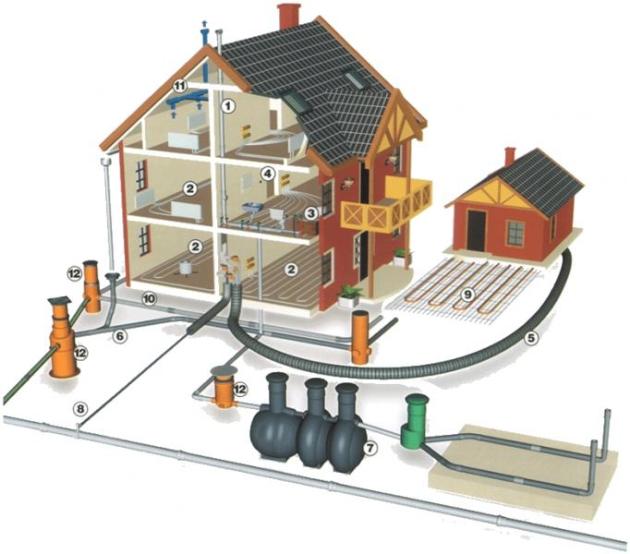
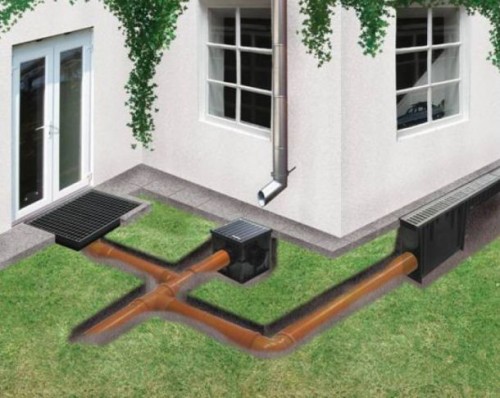
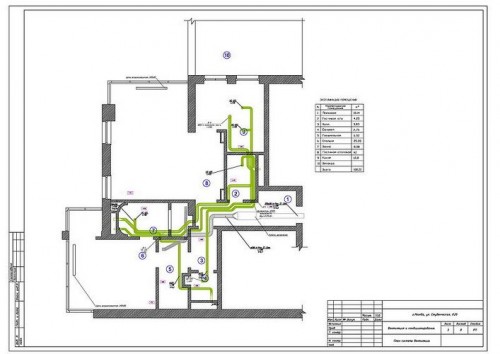
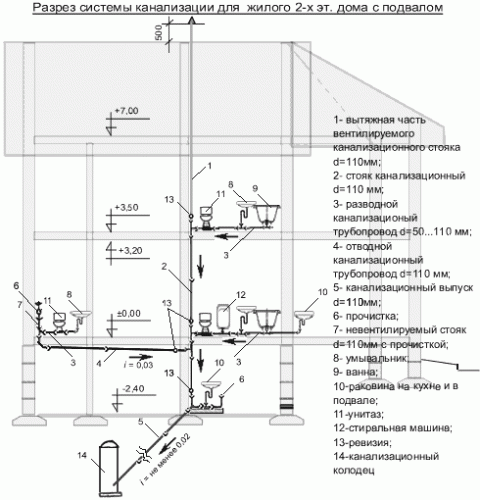
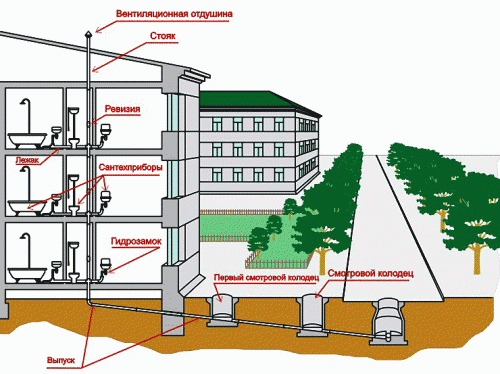
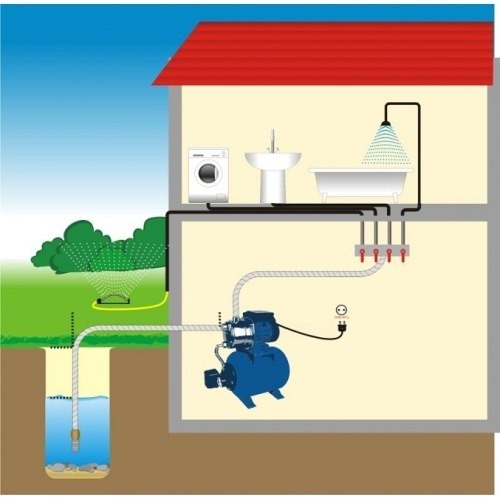
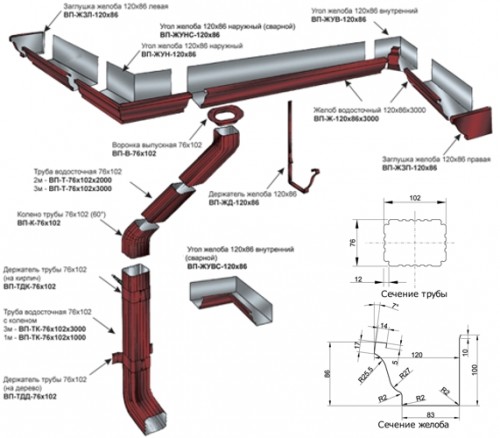












 Start a discussion ...
Start a discussion ...